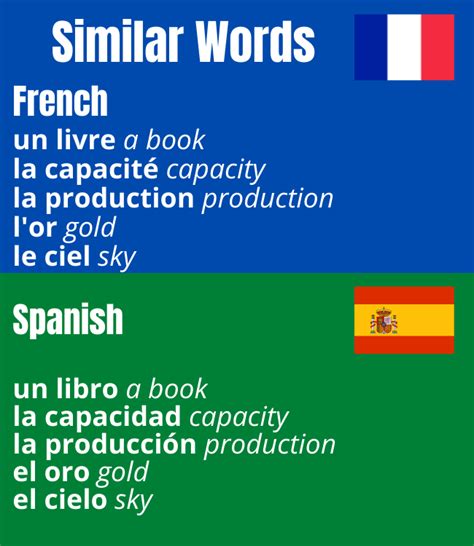Introduction
In the tapestry of global languages, French and Spanish stand as two vibrant threads, each with its own unique allure and far-reaching influence. Both are spoken by millions worldwide, serving as gateways to rich cultures, diverse societies, and boundless opportunities. This comprehensive analysis will delve into the fascinating world of French versus Spanish, contrasting their similarities and differences while exploring the factors that have shaped their global prominence.

Historical Roots
French, a Romance language derived from Latin, emerged in Northern France during the 9th century. Its spread throughout Europe and beyond was largely driven by the Norman Conquest of England in 1066 and the subsequent establishment of the Anglo-Norman court. Spanish, also a Romance language with Latin roots, developed in the Iberian Peninsula during the 13th century. Its global expansion was propelled by the Spanish Empire, which established vast colonies in the Americas, Africa, and Asia.
Geographic Distribution
French is spoken officially in 29 countries across five continents, with significant pockets of speakers in Europe, Africa, and the Americas. The largest French-speaking country is France itself, boasting over 65 million native speakers. Spanish, on the other hand, is spoken officially in 20 countries, primarily in the Americas and Europe. The largest Spanish-speaking country is Mexico, with over 120 million native speakers.
Number of Native Speakers
According to Ethnologue, French is spoken natively by approximately 300 million people worldwide, making it the ninth most spoken language. Spanish, with an estimated 534 million native speakers, ranks second only to Mandarin Chinese. This vast number of speakers has contributed to Spanish’s global reach and cultural influence.
Global Significance
Both French and Spanish are widely recognized as global languages, enjoying official status in numerous international organizations and institutions. French serves as one of the six official languages of the United Nations, while Spanish is an official language in five UN agencies. Additionally, French is the second most spoken language in the European Union, and Spanish is the second most spoken language in the Americas after English.
Distinctive Characteristics
Phonology:
French and Spanish possess notable differences in their sound systems. French is characterized by its nasal vowels, while Spanish is known for its distinctive trills and taps, such as the “r” and “d” sounds.
Grammar:
French grammar is generally considered to be more complex than Spanish, featuring a wider range of verb tenses and moods. Spanish, on the other hand, has simpler verb conjugations and fewer grammatical exceptions.
Vocabulary:
While sharing many cognates due to their common Latin roots, French and Spanish have diverged significantly in vocabulary. French incorporates a larger number of words from Germanic languages, while Spanish has borrowed more heavily from Arabic and indigenous American languages.
Sociolinguistic Aspects
Cultural Influence:
French and Spanish have played significant roles in shaping global culture. French has had a profound influence on art, literature, philosophy, and diplomacy, while Spanish has left an indelible mark on music, dance, and cuisine.
Education:
French and Spanish are widely taught as foreign languages in schools around the world. In the United States, for example, Spanish is the most commonly studied foreign language, while French ranks second.
Economic Opportunities:
Mastery of French or Spanish opens doors to a wide range of career opportunities, particularly in diplomacy, international business, and tourism.
Strategies for Language Learning
Acquiring proficiency in French or Spanish requires a combination of strategies. Some effective approaches include:
-
Immersion through exposure to authentic language materials, such as films, books, and music
-
Regular practice of listening, speaking, reading, and writing
-
Engagement with native speakers or language exchange partners
-
Structured language courses or online learning platforms
Benefits of Language Acquisition
Learning French or Spanish offers a myriad of benefits, including:
-
Enhanced cognitive abilities, such as improved memory and problem-solving skills
-
Increased cultural understanding and empathy
-
Expanded career opportunities in globalized industries
-
Enriched travel experiences and intercultural connections
Conclusion
French and Spanish, two vibrant languages with rich histories and global significance, stand apart yet interconnected in the tapestry of human communication. Whether for cultural enrichment, economic advancement, or educational pursuits, the acquisition of either language opens doors to endless possibilities. As we navigate an increasingly interconnected world, the value of these global languages continues to rise, bridging cultures, fostering understanding, and empowering individuals to make a meaningful impact on the stage of global affairs.
